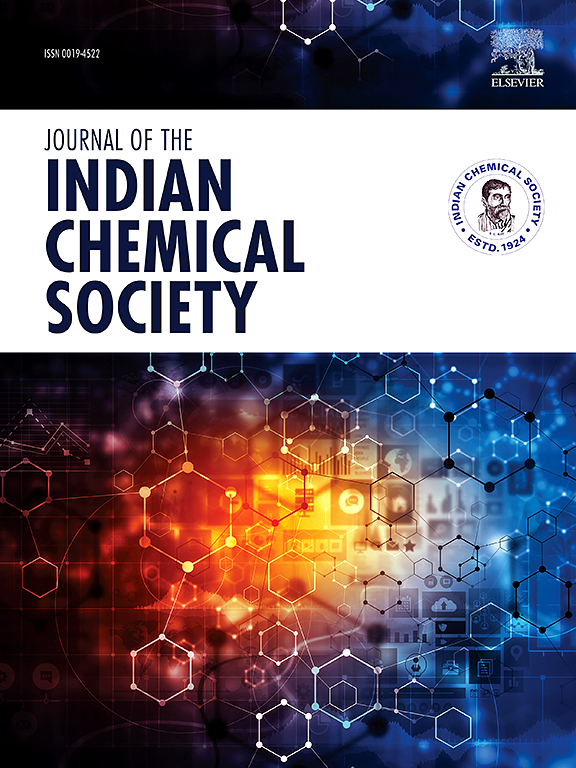Structural, Electrical and Dielectric Characteristics of polypyrrole doped polyvinyl alcohol / carboxymethyl cellulose blended polymer
IF 3.2
4区 化学
Q2 CHEMISTRY, MULTIDISCIPLINARY
引用次数: 0
Abstract
In order to establish polymeric nanocomposite films, polypyrrole (PPy) has been mixed with carboxymethyl cellulose (CMC) and polyvinyl alcohol (PVA), which have been utilized as polymeric matrices in capacitive energy storage filed. X-ray diffraction and scanning electron microscopy equipment were utilized to examine the structure and morphology of all PVA/CMC/x wt % PPy blended polymers. Complex electric modulus, dielectric constant, ac conductivity, complex impedance spectroscopy, and temperature-and frequency-dependent PPy doping levels were investigated in PVA/CMC/x wt % PPy samples. Sample with x = 0.1 has the greatest achievable energy density (U) value and maximum ac conductivity. Elevating the temperature for all samples enhanced the values of U. The AC conductivity's conduction mechanism is also determined. The PPy doping and the temperatures varied the relaxation times of all samples. Cole-Cole figures of all samples are influenced by the amount of PPy and the temperatures. The doped samples exhibit higher dc conductivities than the undoped samples at temperatures up to 330 K. Samples with x = 0.2 and x = 0.4 exhibited greater conductivity than the pure sample above this temperature range. Depending on the temperature range, the unfilled blend range has two activation energies (Ea) values of 0.12 eV and 0.57 eV. The Ea values of the host polymer change in response to the doping amount of PPy. These results indicate that the produced samples could be used for capacitive energy storage.

掺杂聚吡咯的聚乙烯醇/羧甲基纤维素共混聚合物的结构、电气和介电特性
将聚吡咯(PPy)与羧甲基纤维素(CMC)和聚乙烯醇(PVA)混合,制备聚合物纳米复合薄膜,并将其作为聚合物基体应用于电容储能领域。利用x射线衍射和扫描电镜设备对所有PVA/CMC/x wt % PPy共混聚合物的结构和形貌进行了研究。在PVA/CMC/x wt % PPy样品中研究了复电模量、介电常数、交流电导率、复阻抗谱以及温度和频率相关的PPy掺杂水平。当x = 0.1时,样品具有最大可达能量密度(U)值和最大的交流电导率。升高各样品的温度均使u值升高,并确定了交流电导率的传导机理。聚吡啶掺杂和温度改变了所有样品的弛豫时间。所有样品的Cole-Cole图均受PPy用量和温度的影响。在高达330 K的温度下,掺杂样品比未掺杂样品表现出更高的直流电导率。在此温度范围内,x = 0.2和x = 0.4的样品比纯样品表现出更高的电导率。根据不同的温度范围,未填充的共混范围具有0.12 eV和0.57 eV两个活化能(Ea)值。载体聚合物的Ea值随PPy掺杂量的变化而变化。这些结果表明,制备的样品可用于电容储能。
本文章由计算机程序翻译,如有差异,请以英文原文为准。
求助全文
约1分钟内获得全文
求助全文
来源期刊
CiteScore
3.50
自引率
7.70%
发文量
492
审稿时长
3-8 weeks
期刊介绍:
The Journal of the Indian Chemical Society publishes original, fundamental, theorical, experimental research work of highest quality in all areas of chemistry, biochemistry, medicinal chemistry, electrochemistry, agrochemistry, chemical engineering and technology, food chemistry, environmental chemistry, etc.

 求助内容:
求助内容: 应助结果提醒方式:
应助结果提醒方式:


